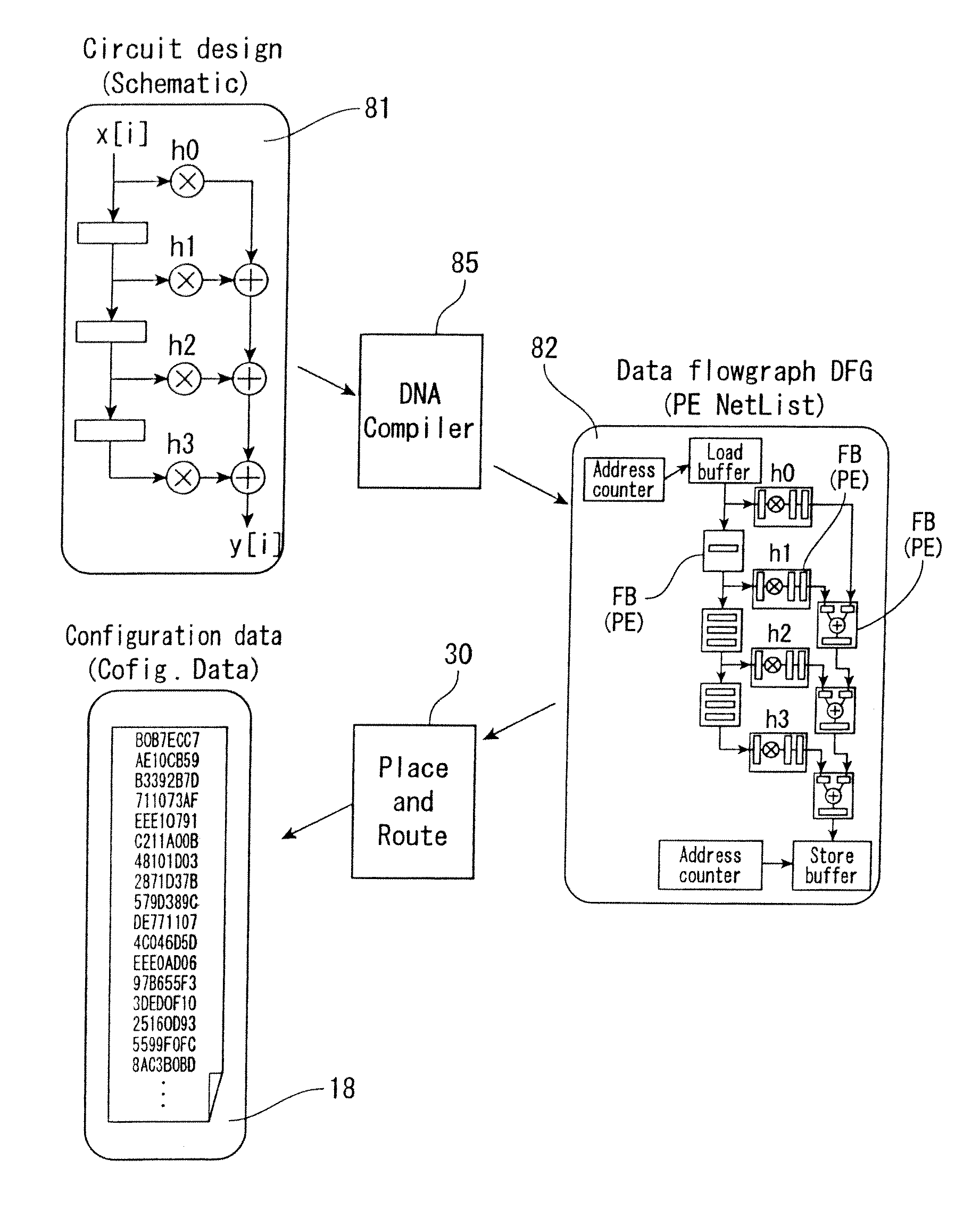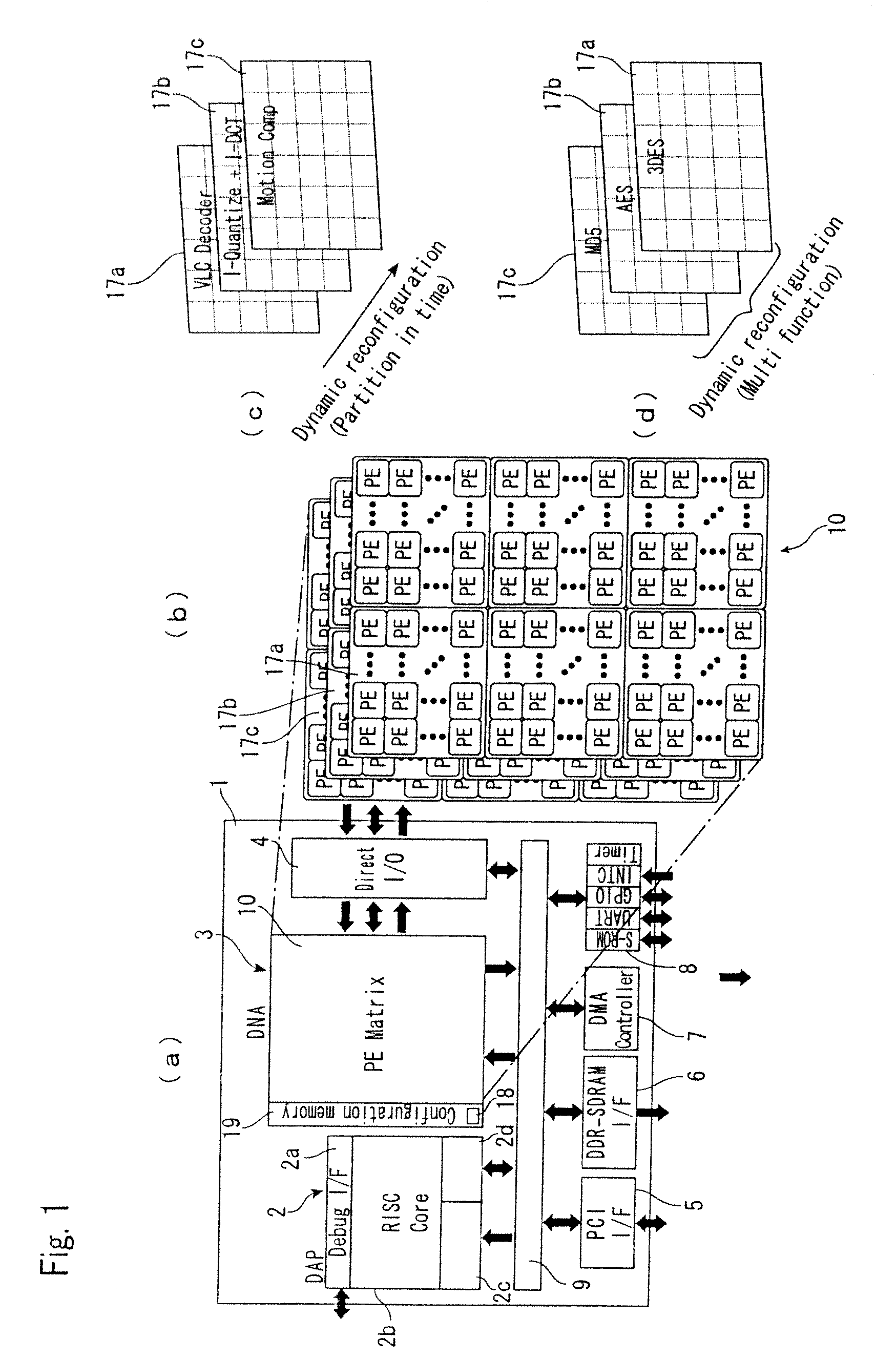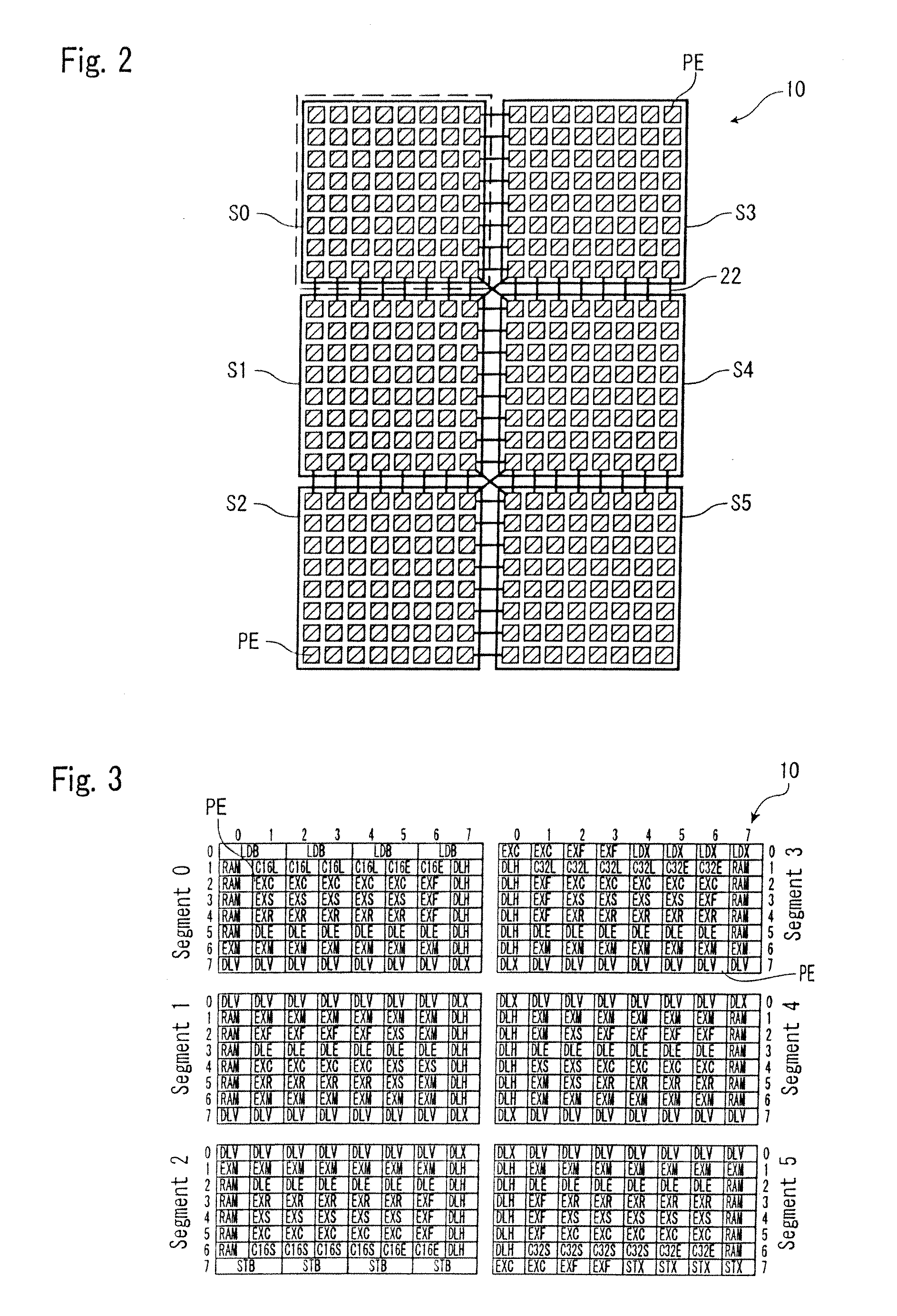Method and system for mounting circuit design on reconfigurable device
- Summary
- Abstract
- Description
- Claims
- Application Information
AI Technical Summary
Benefits of technology
Problems solved by technology
Method used
Image
Examples
Embodiment Construction
[0043]FIG. 1(a) shows one example of a reconfigurable device. This device 1 is a semiconductor integrated circuit device called a “DAPDNA” that has been developed by the present applicant. The device 1 includes a RISC core module 2 called a “DAP” and a dynamic reconfigurable data-flow accelerator 3 called a “DNA”. In addition to the DAP 2 and the DNA 3, the device 1 includes an interface 4 for direct input / output to the DNA 3, a PCI interface 5, an SDRAM interface 6, a DMA controller 7, other peripheral devices 8, and a high-speed switching bus 9 for connecting such elements. The DAP 2 includes a debugging interface 2a, a RISC core 2b, an instruction cache 2c, and a data cache 2d. The DNA 3 includes a PE matrix 10 where 376 processing elements PE (hereinafter simply referred to as “PE” or “PEs”) are placed in two dimensions and a configuration memory 19 that stores configuration data 18 for reconfiguring the PE matrix 10 by changing the functions of the plurality of processing eleme...
PUM
 Login to View More
Login to View More Abstract
Description
Claims
Application Information
 Login to View More
Login to View More - R&D
- Intellectual Property
- Life Sciences
- Materials
- Tech Scout
- Unparalleled Data Quality
- Higher Quality Content
- 60% Fewer Hallucinations
Browse by: Latest US Patents, China's latest patents, Technical Efficacy Thesaurus, Application Domain, Technology Topic, Popular Technical Reports.
© 2025 PatSnap. All rights reserved.Legal|Privacy policy|Modern Slavery Act Transparency Statement|Sitemap|About US| Contact US: help@patsnap.com



